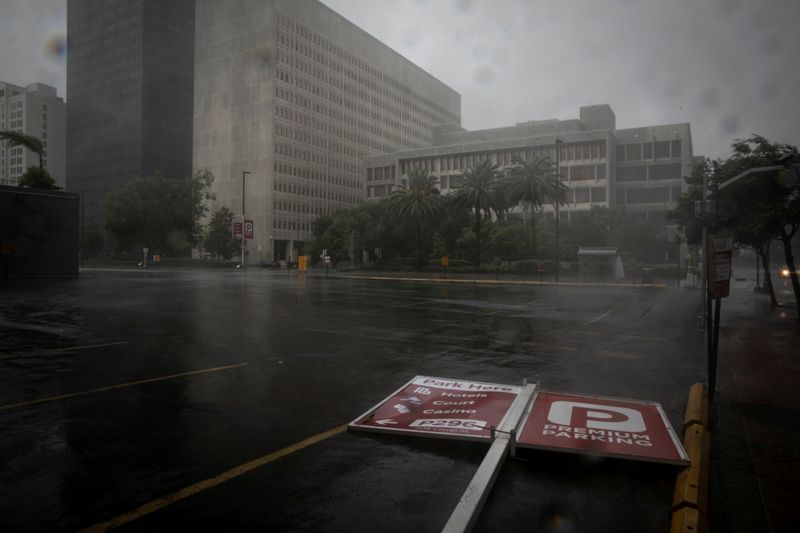HOUSTON (Reuters) – Energy companies on Monday were beginning a days-long evaluation of facilities hit by Hurricane Ida as widespread power outages and flooding onshore presented major hurdles to restarting oil and gas processing plants.
Hurricane Ida knocked out at least 94% of the offshore Gulf of Mexico oil and gas production and caused “catastrophic” damage to Louisiana’s grid.
The loss of power could last three weeks, utilities officials said, slowing efforts to repair and restart energy facilities, which could also take at least two weeks to fully resume operations.
Power outages from a hurricane last year left oil processing plants in Lake Charles, Louisiana, idled for up to five weeks and cost owners millions of dollars in lost production.
“You can’t simply flip the switch” and resume production of a refinery, said Robert Yawger, director of energy futures at Mizuho Securities, describing restarts as complicated and dangerous. “My observation is two to four weeks” before they can be completed, he said.
SWAMPED ONSHORE
Hundreds of oil production platforms remained evacuated and nearly 1.1 million homes and businesses in Louisiana and Mississippi were without power on Monday afternoon. Refineries in Norco and Belle Chasse, Louisiana, remained swamped a day after the storm passed, images showed.
Entergy Corp, the largest power utility in Louisiana, warned there was “catastrophic” damage to transmission lines. One tower that provides power collapsed at the height of the storm and its power lines fell into the Mississippi River, the utility said.
Exxon Mobil Corp halted operations at its 520,000 barrel per day (bpd) Baton Rouge oil processing and chemical complex due to lack of power and raw materials, a spokesperson said. Phillips 66 will conduct a post-storm assessment at a refinery in a hard-hit area of Louisiana “when it is safe to do so,” said spokesman Bernardo Fallas.
The outages could help push retail gasoline prices up 5 to 15 cents a gallon with processing halted, tracking firm GasBuddy said. The extent of price increases will depend on how quickly electric power and a major fuel pipeline can resume operations, said petroleum analyst Patrick De Haan.
Colonial Pipeline Co, the largest U.S. fuel pipeline network, hopes to start pumping gasoline and diesel on closed lines from Houston to Greensboro, North Carolina, on Monday evening, it said. Its network supplies nearly half the gasoline used along the U.S. East Coast and an extended May shutdown led to fuel shortages.
AERIAL OFFSHORE SURVEYS
Oil companies began surveying offshore platforms for damages. Royal Dutch Shell planned a flyover on Monday of its properties and BP Plc, BHP, Chevron Corp and Exxon Mobil also said they were assessing offshore facilities.
“It will take some days to get a clear picture of possible impact,” said Ola Morten Aanestad, a spokesperson for Equinor ASA, which evacuated its Titan platform and halted production in the U.S. Gulf of Mexico.
About 1.72 million bpd of oil production and 2.01 billion cubic feet per day of natural gas output remained offline in the U.S. side of the Gulf of Mexico following evacuations at 288 platforms.
Nearly a dozen commercial shipping ports from New Orleans to Pascagoula, Mississippi, remained closed on Monday. The closures included Louisiana Offshore Oil Port (LOOP), the largest privately owned crude export and import terminal in the United States.
Ida made a landfall near Port Fourchon, the land base for LOOP. Officials for the oil-export port were unavailable to comment on Monday.
(Corrects natural gas production figures in third-to-last paragraph)
(Reporting by Liz Hampton in Denver, Marianna Parraga and Erwin Seba in Houston; Writing by Gary McWilliams; Editing by Barbara Lewis, Matthew Lewis and Richard Pullin)
























